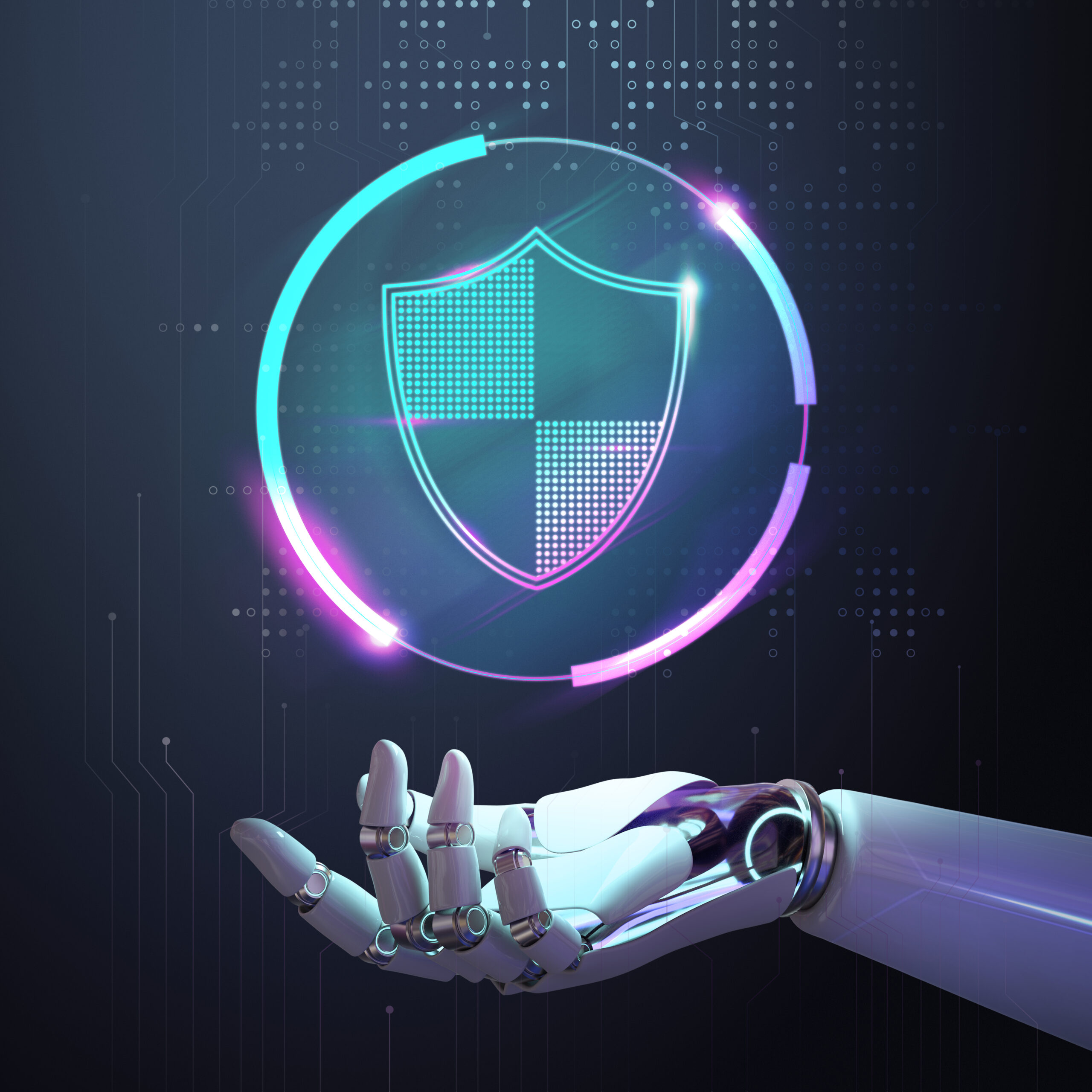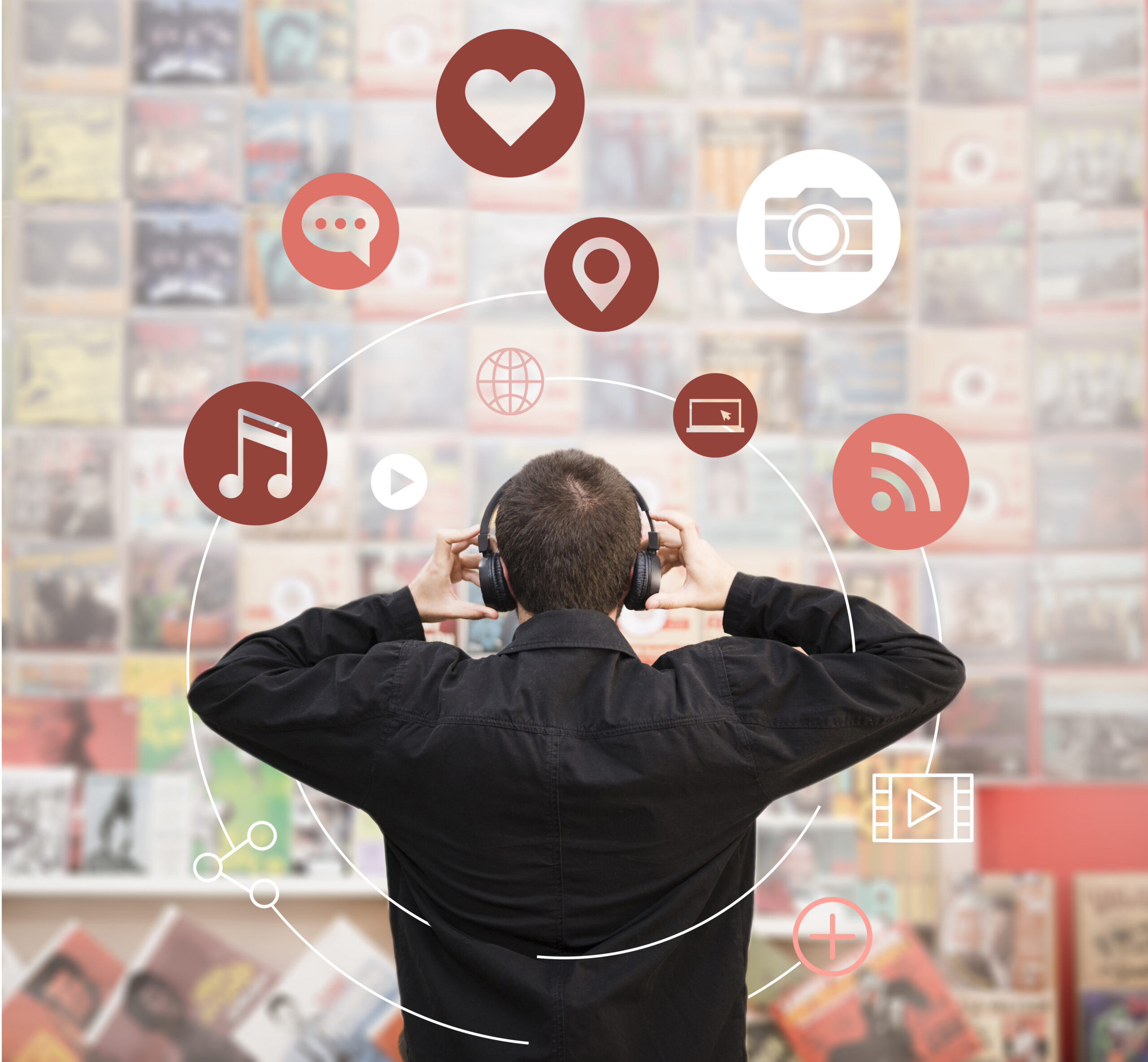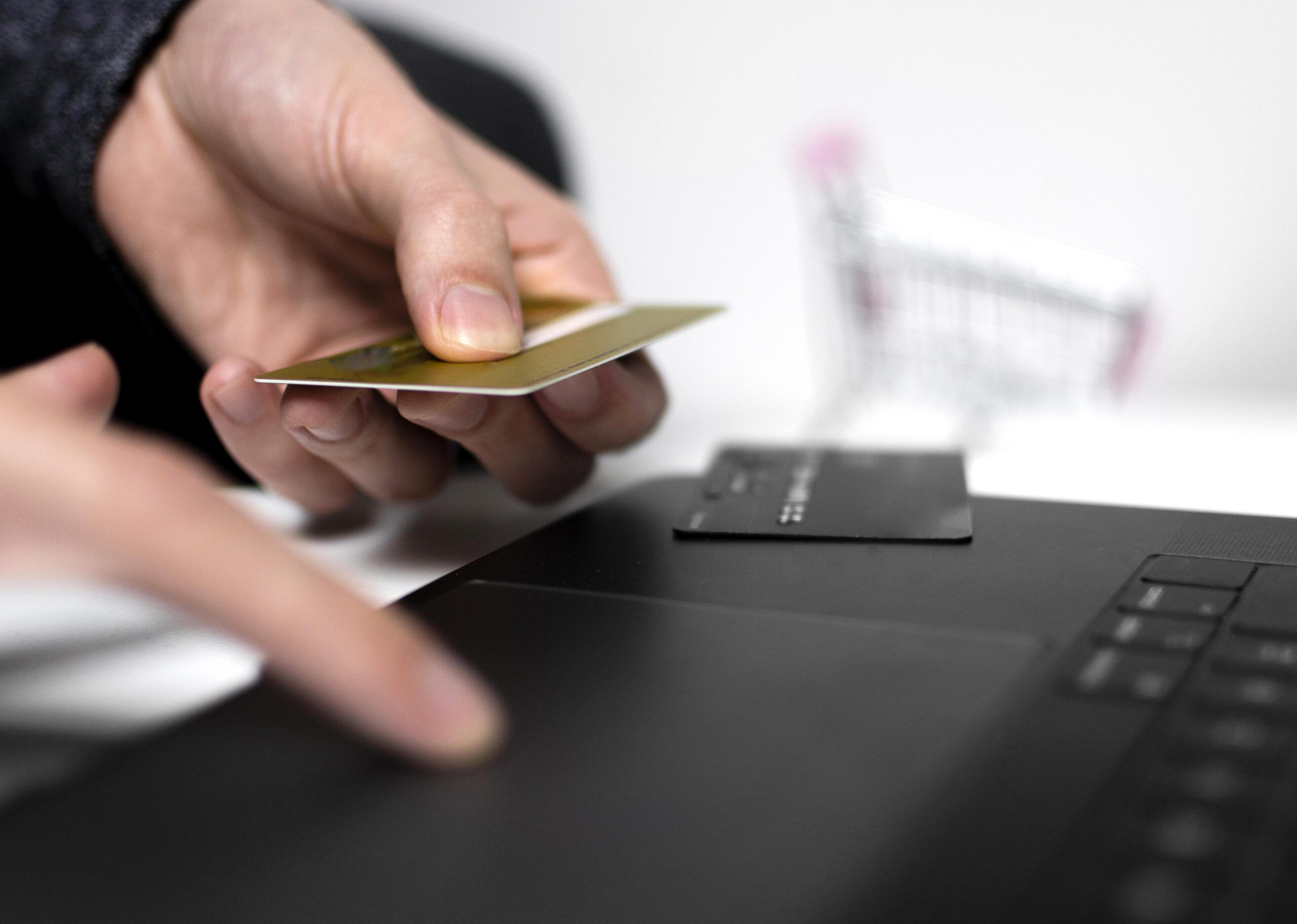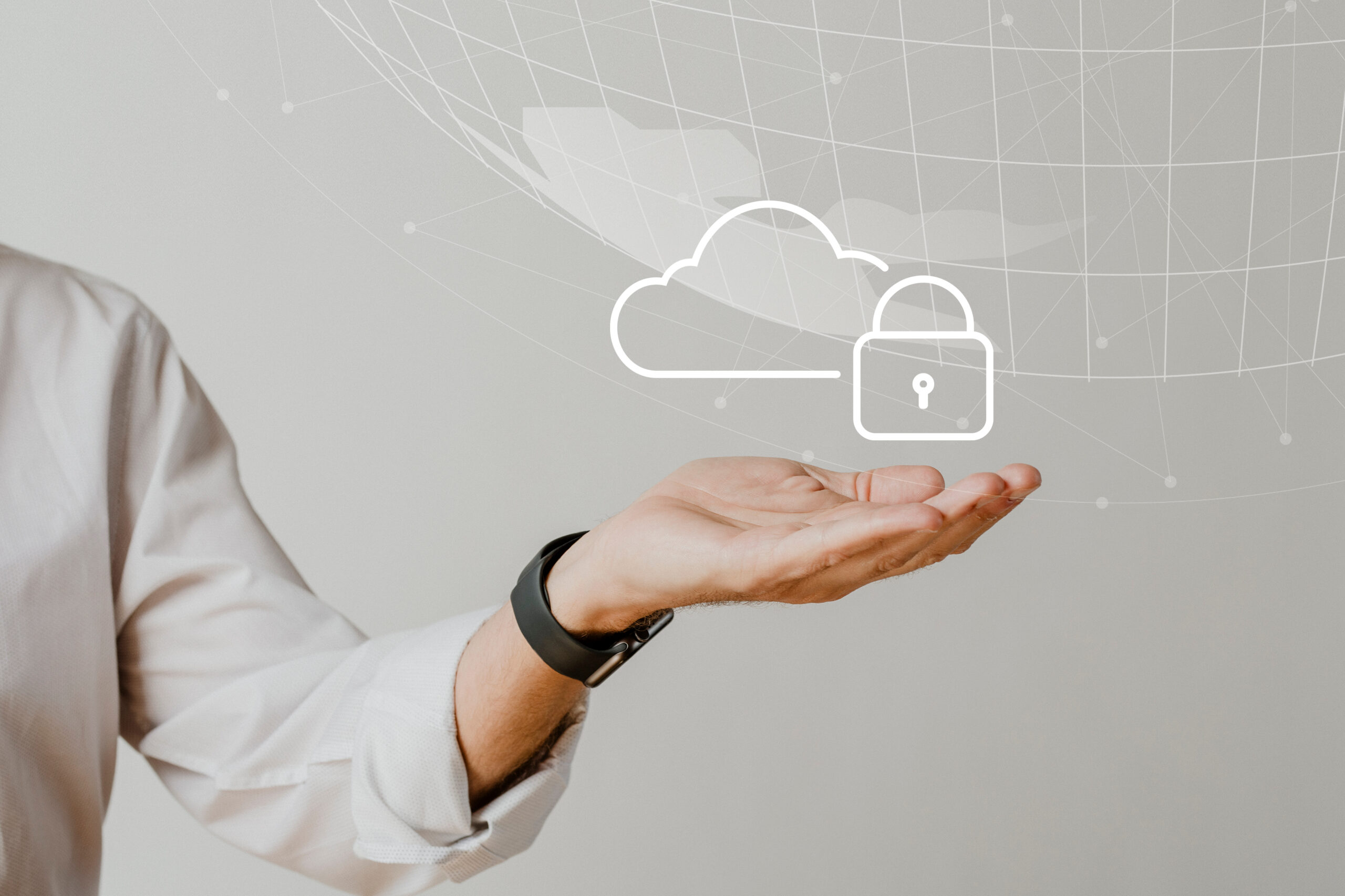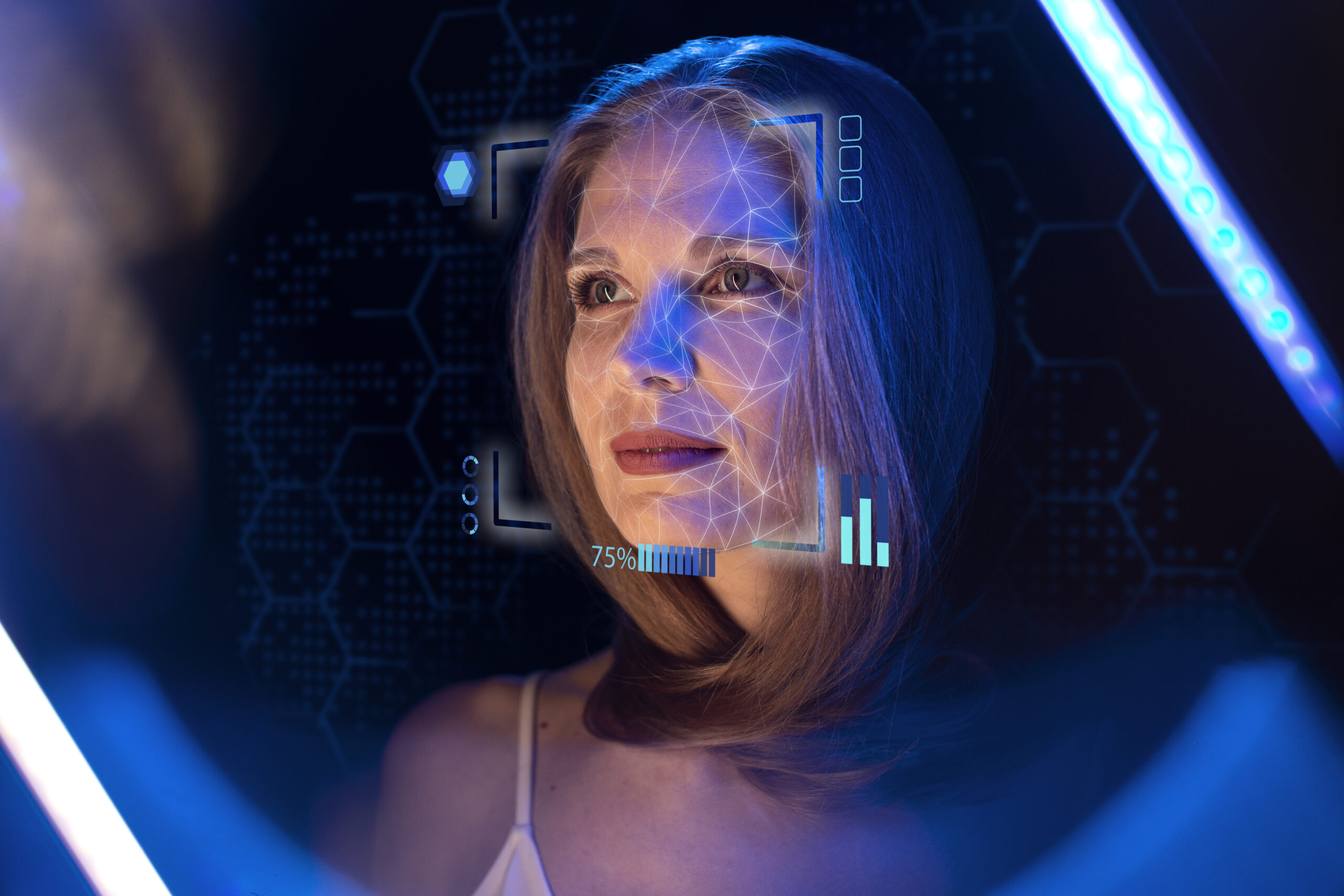What is spyware and how to protect your digital assets
Our devices have become gatekeepers of personal and professional information. However, they have also become targets for cybercriminals. One of the most common, though not always visible, risks is spyware.
But what is spyware, how does it affect your digital assets, and, most importantly, how can you protect yourself? This article explains it all.
What is spyware?
Spyware is malicious software designed to infiltrate devices and collect information without your consent.
This software works in the background, spying on your device's activity, such as the websites you visit, the passwords you enter, or even your private conversations. Sometimes, it can even take partial control of your computer or mobile to perform malicious activities.
Spyware compromises your privacy and digital assets, such as bank details, access credentials to sensitive services, or critical corporate information.

Most prominent types of spyware
Now that you know what spyware is, you should know that not all of them work the same way. Here are some of the most common types of spyware:
- Keyloggers. These programs record every keystroke you make on your device. They are used to capture passwords, usernames, and other sensitive data.
- Adware. While their primary intent is to display unwanted ads, some adware also collects browsing data to personalize those ads and sell your information to third parties.
- Remote Access Trojans (RATs). They allow attackers to control your device remotely. They can activate your camera, access your files, or even install other malware without you noticing.
- Mobile spyware. These programs are specifically designed to collect data from mobile phones. From text messages and GPS locations to contact lists or call recordings, this spyware can turn your phone into a spying tool.
Spyware: Famous Examples
Some spyware cases have achieved worldwide notoriety due to their massive impact:
- Pegasus. An extremely sophisticated spyware used to spy on journalists, activists, and politicians. This program infected mobile devices without the need for user interaction.
- CoolWebSearch. This spyware modifies the web browser to redirect to malicious pages and collect information from users.
- FinFisher. Used by governments and criminals alike, this spyware is designed to monitor devices in advanced ways.
These examples remind us that spyware is not a minor problem or limited to famous people. We can all be at risk at some point.
How do you remove spyware?
If you suspect that your device is compromised, here are the basic steps to detect and remove spyware:
- Identify signs of infection
- Your device is slower than usual.
- Unexpected pop-up ads appear.
- Changes to your browser, such as a new homepage.
- Unusually high battery or data consumption.
- Use anti-malware tools. Install reputable programs like Malwarebytes or Norton to scan your device and remove any detected spyware.
- Update your operating system and apps. Cybercriminals often exploit vulnerabilities in outdated software. Always keep your programs up to date.
- Reset your device to its factory settings. If the infection persists, this can be an extreme but effective solution. Make sure to back up your important data before proceeding.
- Consult a professional. If you're unsure how to proceed, contact a cybersecurity expert who can help you clean and protect your device.

How to protect yourself from future spyware attacks
You already know the primary keys to knowing what spyware is and should understand that prevention is the best defense against this attack. Here are some key practices:
- Only download apps from trusted sources. Avoid installing programs from unknown or dubious websites.
- Be wary of suspicious emails. Don't click on links or download files from senders you don't recognize.
- Use up-to-date security software. Install and keep a good antivirus and antimalware program active.
- Set up strong passwords. Use unique combinations of letters, numbers, and special characters, and avoid using the same password for different accounts.
- Turn on two-factor authentication (2FA). This adds an extra layer of security, making it difficult to gain unauthorized access even if someone gets your password.
Your Cyber Surveillance Ally: Protect What You Value Most
In today's landscape, protecting your digital assets is not an option but a necessity. At Enthec, we offer cyber surveillance solutions to protect your information from threats like spyware.
If you're looking to identify breaches and spot issues that have overcome guardrails, we're here to help.
Spyware is a real threat that affects both individuals and businesses. By knowing what it is, how it works, and how to prevent it, you can take a firm step towards protecting your digital assets. Remember: in cybersecurity, staying one step ahead of attackers is crucial.
Would you like to know more? Enthec is here to help.
The Relevance of Artificial Intelligence in Cybersecurity
Artificial intelligence (AI) has become a key player for many people in different personal and professional areas, but we must also know its ability to protect us against digital threats.
From businesses to individuals, we are all exposed to constantly evolving cyberattacks, where the combination of cybersecurity and artificial intelligence plays a decisive role. AI applied to cybersecurity improves the ability to detect and prevent threats, allowing a more efficient and faster response to possible attacks.
In this article, we will discover why artificial intelligence and cybersecurity are so closely linked, the applications of this technology, and its positive impact on our daily lives.
Why is artificial intelligence critical in cybersecurity?
The cyber threat landscape has become increasingly complex. Cybercriminals employ advanced techniques to breach systems, from malware and phishing to sophisticated targeted attacks. In the face of this, although helpful, traditional cybersecurity tools, such as antivirus and firewalls, are no longer enough.
You may be interested in→ Top cybersecurity tools to use in your business.
Artificial intelligence for cybersecurity stands out because it can:
- Analyze large volumes of data in record time.
- Detect suspicious patterns that might go unnoticed by humans.
- Constantly learning and adapting to improve its effectiveness.
The key is their ability to act proactively and automatically, making the defense barriers more dynamic in the face of constantly changing threats.

Applications of AI for cybersecurity
Artificial intelligence applied to cybersecurity has a range of applications ranging from threat detection to response automation. Here are some of the highlights:
Real-time threat detection
Advanced algorithms allow AI to analyze data traffic and detect anomalous behavior in real-time. For example, it can identify an attempted intrusion into a network before it causes damage. This significantly reduces reaction times and mitigates potential risks.
In this context, platforms such as Kartos offer an additional layer of protection by detecting in real-time the sensitive information of an organization or person that is publicly exposed and available to anyone. These alerts prevent their misuse in designing targeted attacks or committing fraud, thus proactively strengthening the security posture.
Attack prevention
AI can anticipate attackers' movements by studying previous patterns. From here, it is possible to create more robust systems designed to prevent attacks before they occur. For example, some AI models can identify phishing emails even if they use advanced spoofing techniques.
Response Automation
When an attack is detected, AI can automatically make decisions, such as blocking unauthorized access or neutralizing malware. By acting immediately, AI saves time and minimizes potential damage.
Information protection
AI is also crucial for protecting sensitive business and user data. You can detect data extraction attempts or unauthorized access by analyzing access patterns and blocking them in real-time.

Benefits of artificial intelligence in cybersecurity
Combining cybersecurity and artificial intelligence offers numerous benefits that improve protection and optimize available resources. Here are some of the most important ones:
Early Threat Detection
One of the biggest challenges in cybersecurity is identifying a threat before it causes damage. AI can analyze large amounts of data in seconds, making it possible to detect anomalies that might go undetected with traditional methods.
Prevention of human error
Human error is one of the leading causes of cyberattacks. Weak passwords clicks on suspicious links, and incorrect configurations are gateways for attackers. AI helps minimize these risks by automating tasks and alerting them to unsafe behaviors.
Adaptability
As attackers develop new techniques, AI systems can adapt quickly, learning from each attack attempt to strengthen defenses. This ensures that protective measures are always one step ahead.
The future of artificial intelligence applied to cybersecurity
The role of artificial intelligence in cybersecurity will only grow in the coming years. With the rise of the Internet of Things (IoT), the number of connected devices will increase, expanding the attack surface. AI will be instrumental in managing this complexity and developing more innovative, personalized solutions.
In addition, collaboration between humans and machines will be essential. Although AI is powerful, it does not replace human judgment. Instead, it amplifies our capabilities, allowing cybersecurity experts to focus on more strategic tasks.
Enthec: your expert partner in cyber-surveillance
At Enthec, we know that companies and individuals face unique challenges in cybersecurity. That's why we've developed specialized solutions through our platforms: Kartos, designed to protect businesses, and Qondar, focused on individual security. Both use artificial intelligence, which is applied to cybersecurity through threat watchbots.
Kartos, a cyber-surveillance platform for companies, helps your organization detect publicly leaked information in real-time, thus locating open and exposed security breaches.
On the other hand, Qondar focuses on protecting individuals from digital threats that can compromise their personal information, privacy, and peace of mind. It continuously and automatically monitors people's sensitive information and digital assets to protect individual privacy and prevent criminal or harmful use.
In a world where threats constantly evolve, intelligent tools like Kartos and Qondar are not a luxury but a necessity. Whether you're looking to protect your organization's data or your personal information, Enthec is here to help keep you safe.
The combination of artificial intelligence and cybersecurity is the key to facing the challenges of the digital world. With Enthec, you're one step away from the cybersecurity of the future.
What are you waiting for to leap with Kartos and Qondar? Together, we can protect your business and yourself. Contact us!
5 social media security strategies
With the evolution of technology and its general implementation in all areas of individual action, security on social networks is essential to protect personal information and avoid various cyber threats that can endanger people's personal and patrimonial integrity.
Importance of privacy and security in social networks
Social media has become integral to our lives, allowing us to connect with friends, family, and coworkers, share experiences, and access various content. However, with its increasing use, the amount of personal information we share online has also increased.
Therefore, privacy and security on social networks are crucial to protect our personal information from unauthorized access, cyberattacks, and other threats.
In addition, it allows users to control what information is shared, when, how, and with whom. This includes personal details such as location, wealth, interests, ideology, relationships, etc. Without proper security measures, cybercriminals can exploit this data for malicious activities such as identity theft, fraud, and harassment.
Conversely, a lack of privacy can lead to a loss of control over personal information, exposing users and their contacts to significant risks.
Social media security is also vital to protecting account integrity and preventing unauthorized access. Implementing robust security strategies helps prevent attackers from taking over accounts, stealing personal information, or conducting malicious activities on behalf of the victim.
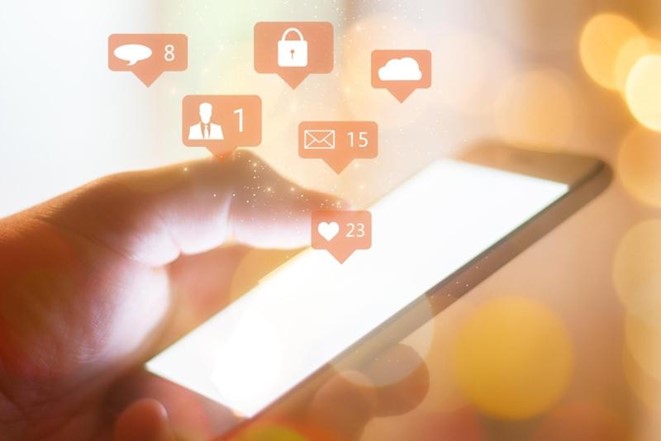
Consequence of not protecting your social networks
Failing to implement social media security measures can have serious consequences. Some of the main ones are:
- Identity theft. Cybercriminals can obtain enough personal information from social media to impersonate the person and commit fraud. This can lead to opening credit accounts in your name, making fraudulent purchases, deceiving contacts, and many other malicious actions.
- Harassment and cyberbullying. A lack of privacy can expose users to harassment and cyberbullying. Attackers often use personal information shared on social media to harass their victims.
- Financial fraud. Personal and financial data shared on social media can be used to commit fraud. This includes accessing bank accounts, credit cards, and other financial services and other actions likely to cause significant financial loss to the victim.
- Loss of reputation. Personal and professional information exposed on social media can be used to damage a person's reputation. This is especially detrimental to professionals who depend on their reputations for their careers.
- Unauthorized access to sensitive data. If not properly protected, social media accounts can be hacked, and sensitive data, such as private messages and photos, are exposed and susceptible to malicious use.
5 Social Media Safety Measures
The following measures must be implemented, at minimum, to protect personal information and maintain security on social media.
Privacy settings on profiles
Privacy settings on social media profiles allow users to control who can view and access their information. Reviewing and adjusting these settings regularly ensures that only authorized people can see personal details.
- Limiting access to personal information: ensuring that only close contacts and family members can see personal information such as location, marital status, and contact details.
- App Permissions Review: It is essential to be aware that third-party apps connecting to social media accounts may have access to significant personal data. Non-essential apps should be reviewed, and permissions should be revoked.
- Post control: It's a good idea to set up your account so that only the owner can view and approve posts in which they are tagged. This will give you control over what appears on your profile.
Two-Factor Authentication
Two-factor authentication (2FA) is a security measure that protects social media accounts. Requiring a second form of verification in addition to the password, 2FA makes it harder for attackers to access an account, even if they know your password.
- 2FA implementation. Two-factor authentication must be enabled on all social media accounts. This usually involves receiving a verification code on the mobile phone or email.
- Authenticator apps. There are authenticator apps like Google Authenticator or Authy that generate temporary, one-time verification codes to access the account.
Secure password management
Strong, unique passwords are critical to protecting social media accounts. Reusing or using weak passwords significantly increases the risk of an account being hacked.
- Strong passwords. It would be best to create passwords that are difficult to guess, using a combination of upper- and lower-case letters, numbers, and special characters. Avoid using easily guessable personal information such as names or dates of birth and passwords that are common or repeated in other accounts.
- Password managers. Using a password manager to generate and store unique and strong passwords for each account is advisable. This makes password management easier and reduces the risk of reusing passwords.
- Periodic password changes. Although it is a routine that involves mental effort and conservation due to the number of accounts and passwords each person manages, it is essential to change passwords periodically and never share them with others or store them in places that are easy for others to reach.

Never access from third-party devices
Accessing social media accounts from third-party devices, such as public computers or borrowed devices, can put your security at risk. These devices can be compromised, and access credentials can be recorded and stored. We advise you to take into account the following recommendations.
- Use of trusted devices. Social media accounts should be accessed only from trusted devices protected by antivirus and firewalls.
- Logout. Always log out of social media accounts after using them, especially on shared or public devices.
- Safe browsing. It is advisable to use private or incognito browsing modes when accessing accounts from devices that do not belong to the owner to prevent browsing data and credentials from being saved.
Setting up a cyber surveillance system
The most innovative cyber-surveillance tools enable continuous monitoring of social media accounts and their online activity to quickly detect and respond to potential security threats. This helps prevent malicious or criminal use of both social media accounts and personal data.
The cyber surveillance system allows the user to set up alerts for suspicious activity. This way, you can receive real-time notifications about any suspicious activity on your social media accounts, such as login attempts from unknown locations or posts of unusual content.
How Qondar can help you improve social media security
Qondar Personal Threat Watchbots is the innovative cyber surveillance platform developed by Enthec for the online protection of people's personal data and digital assets. Thanks to its army of bots deployed across all layers of the Web, Qondar protects the integrity of personal profiles on LinkedIn, Facebook, X, Instagram and Telegram against hacking and manipulation. Qondar is an automated tool that works continuously and provides real-time data on any attempted malicious use of personal social networks. Its use is also very simple: just enter the social profiles to be protected on the platform and Qondar begins to work autonomously. If you hold an important position in an organization, have public or social relevance, or are simply concerned about the integrity of your social media accounts, contact us to learn more about how Qondar can help you.
Proactive security: What is it and why use it to prevent and detect threats and cyberattacks?
Proactive security involves a combination of technologies, processes, and practices designed to protect organizations from attacks or unauthorized access before they occur.
What is proactive security?
Proactive security is an approach to cybersecurity that focuses on preventing cyber threats before they occur rather than simply reacting to them once they have occurred.
This approach involves identifying and remediating security vulnerabilities and anticipating future threats to prevent potential security breaches.
Proactive safety is based on the premise that prevention is better than repair. Rather than waiting for a security incident to occur and then taking steps to minimize or repair the damage, organizations with a proactive approach to cybersecurity seek to prevent these incidents by identifying and eliminating vulnerabilities before cybercriminals can exploit them.
A key component of proactive cybersecurity is regularly assessing information systems and networks to identify vulnerabilities. This may involve conducting penetration tests, in which security experts attempt to breach the organization's systems to uncover weaknesses before attackers do.
Another proactive strategy is the continuous monitoring of the attack surface external to the organization – the internet, dark web, deep web, social media, and other sources – to detect leaked information, open breaches, exposed system vulnerabilities, and suspicious activity. This involves the use of continuously functioning automated cyber intelligence tools for real-time threat detection.
Security training is also an important aspect of proactive cybersecurity. By educating employees on security best practices and keeping them informed about the latest threats and attack tactics, organizations can reduce the risk of security breaches occurring due to human error or a lack of security knowledge.
By taking a proactive approach to security, organizations empower themselves to prevent threats before they occur, minimizing the risk of cyberattacks and protecting their valuable information assets.

Why use a proactive approach to security?
Today, cybersecurity is a critical concern for all organizations. However, many companies still take a reactive approach, responding to threats as they occur, and organizations need to adopt a proactive attitude to security due to the advantages it brings:
- Attack prevention. Proactive security focuses on preventing attacks before they happen. This is achieved by identifying and remediating vulnerabilities and anticipating future threats. By doing so, organizations avoid the costly downtime and data loss associated with consummate cyberattacks.
- Cost savings. Although implementing proactive security measures may require an upfront investment, the cost of these measures is often much lower than the cost of responding to a cyberattack and its aftermath. In addition, successful cyberattacks can lead to regulatory fines and litigation, which cause financial damage.
- Reputation protection. A cyberattack can significantly damage an organization's reputation. Your customers and business partners will lose trust in a company that can't protect their data. By taking a proactive approach, organizations demonstrate their commitment to data security, thereby enhancing their reputation.
- Compliance. Most countries have strict rules and regulations around data security. By taking a proactive approach, organizations can ensure they comply with these standards, thus avoiding fines and penalties, while facilitating partnerships and internationalization.
- Guarantee of business continuity. Organizations can avoid system downtime and keep their operations running smoothly by identifying and fixing vulnerabilities before they are exploited.
- Competitive advantage. Organizations that demonstrate a solid commitment to cybersecurity have a competitive advantage in an increasingly digitized market. Customers and business partners often prefer to do business with companies that take data security seriously.
Proactive Security Best Practices for Detecting Cyberattacks
A proactive security attitude involves deploying a series of best practices in the organization's cybersecurity strategy.
Endpoint Detection and Response (EDR)
It provides continuous visibility into network endpoints and enables rapid responses to cyber threats. EDR collects and analyzes endpoint data to detect, investigate, and prevent threats.
This proactive solution enables organizations to identify abnormal behavior, perform forensic analysis, and mitigate risks before they become security incidents, thereby improving their overall security posture.
Data Loss Prevention (DLP)
It focuses on identifying, monitoring, and protecting data in use, in motion, and at rest. DLP uses security policies to classify and protect sensitive and critical information, preventing users from sending, storing, or using sensitive data inappropriately.
By detecting potential data breaches before they occur, DLP helps organizations prevent the exposure of valuable information, comply with regulations, and protect their reputation.
Vulnerability Detection
Monitoring the external attack surface and locating exposed vulnerabilities is an effective proactive cybersecurity practice. It consists of identifying, classifying, and prioritizing vulnerabilities in the corporate system that are accessible to the public.
This practice allows organizations to detect potential cyberattack entry points, providing a clear view of potential threats. By locating and remediating these vulnerabilities, organizations strengthen their cybersecurity strategy, prevent intrusions, and minimize the impact of any attacks. This practice is essential for effective cybersecurity management.
Disaster Recovery Plan
It prepares an organization to respond to a cyberattack. It includes procedures for detecting, evaluating, and recovering from security incidents.
This plan helps minimize damage, accelerate recovery, and protect data integrity. It is essential to maintain business continuity, protect the company's reputation, and ensure customer trust. The goal is to restore normal operations as quickly as possible after a cyberattack.
Benefits of Proactive Security
Staying one step ahead of cybercriminals makes it possible to neutralize attacks before they are executed or minimize their consequences if they cannot be avoided.
A proactive attitude to security provides the organization with the following advantages:
Threat Anticipation
By anticipating threats, organizations can take preventative measures to protect their systems and data, reducing the risk of security breaches and minimizing the impact of any attacks.
Strengthening the relationship with the customer
Proactive cybersecurity strengthens the customer relationship by building trust and security. Customers value their privacy and the protection of their data.
By implementing proactive measures, organizations demonstrate their commitment to customer data security. This increases customer satisfaction, improves retention, and attracts new customers. In addition, in the event of a cyberattack, a quick and effective response can minimize the impact on customers, maintaining their trust in the organization.
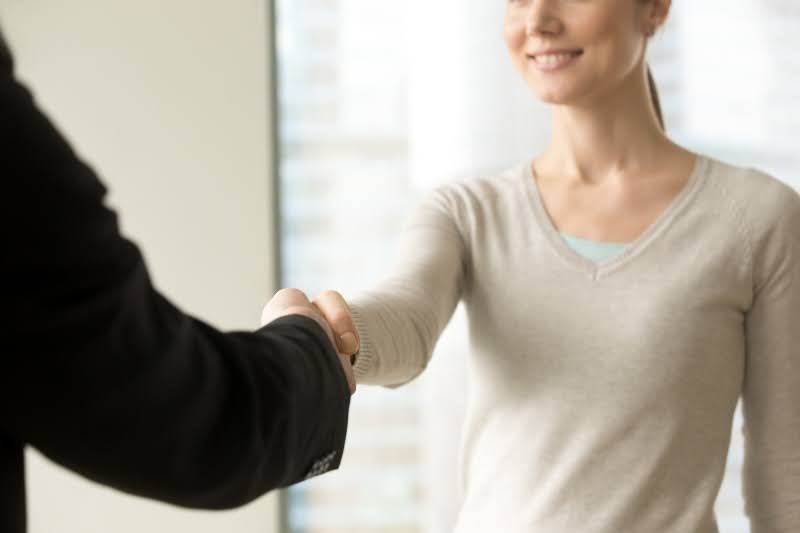
Reducing business risk
Proactive cybersecurity reduces business risk by preventing cyberattacks. By identifying and mitigating vulnerabilities, exposure to threats is minimized, protecting the integrity of data and systems.
This avoids costly outages and information loss, maintaining customer trust while complying with privacy and data protection regulations. Proactive cybersecurity protects the company's value and reputation.
To stay up-to-date in this sector, we encourage you to access our content→ The 5 cybersecurity trends you need to know.
Discover the Kartos by Enthec CTEM platform
Kartos Corporate Threat Watchbots, the Continuous Threat Exposure Management platform for companies developed by Enthec, provides organizations with the most evolved Cyber Surveillance capabilities on the market to respond to attacks' evolutions and trends.
Using Artificial Intelligence internally developed and working automatedly and continuously, Kartos by Enthec obtains and delivers data on companies' open and exposed vulnerabilities, providing real-time alarms and issuing reports on their cybersecurity status and that of their value chain.
In this way, Kartos allows organizations to implement a proactive approach in their cybersecurity strategy and ensure the detection and nullification of open breaches and exposed vulnerabilities before they are used to execute a cyberattack.
If you would like to learn more about how Kartos can help you implement a proactive approach in your cybersecurity strategy, don´t hesitate to contact us.
What is a CVE?
CVE, Common Vulnerabilities, and Exposures is a list of standardized names and codes for naming information security vulnerabilities and exposures to make them publicly known.
Each vulnerability has a unique identification number, which provides a way to publicly share data and information about them.
Thus, a CVE is a standard identifier for information security vulnerabilities. In addition to the unique number, a CVE assigns a brief description to each known vulnerability to facilitate its search, analysis, and management.
CVEs aim to provide a common, unified reference for vulnerabilities so that they can be easily shared and compared across different sources of information, tools, and services. CVEs also help to improve awareness and transparency about threats to information security and foster cooperation and coordination between the different actors involved in their prevention, detection, and response.
Before delving into how the CVE system works, it is worth clarifying what a vulnerability and an exposure are.
Differences between a vulnerability and an exposure
As indicated by INCIBE, a vulnerability is a technical flaw or deficiency in a program that can allow a non-legitimate user to access information or carry out unauthorized operations remotely.
An exposure is an error that allows access or unwanted people to a system or network. Exposures can lead to data breaches, data leaks, and the sale of personally identifiable information (PII) on the dark web.
An example of a data exposure could be accidentally publishing code to a GitHub repository.

How does the CVE system work?
CVE is a security project born in 1999 focused on publicly released software, funded by the US Division of Homeland Security. The CVE Program is managed by the Software Engineering Institute of the MITRE Corporation, a non-profit organization which works in collaboration with the United States government and other partners.
CVEs are issued by the CVE Program, an international initiative that coordinates and maintains a free, public database of vulnerabilities reported by researchers, organizations and companies around the world.
CVEs can be viewed on the official CVE Program website, where you can search by number, keyword, product, supplier, or date. They can also be consulted in other secondary sources that collect and analyze CVEs, such as the National Vulnerability Database (NVD) in the United States, which provides additional information on the impact, severity and the solutions for each vulnerability.
Criteria followed by CVEs
The CVE Glossary uses the Security Content Automation Protocol (SCAP) to collect information about security vulnerabilities and exposures, catalog them according to various identifiers, and provide them with unique identifiers.
The program is a community-based cooperative project that helps discover new vulnerabilities. These are discovered, assigned and published on the lists so that they are public knowledge. It does not include technical data or information on risks, impacts and remediation.
In this way, the CVE consists of a brief description of the error and the version or component that is affected. It also tells where to find out how to fix the vulnerability or exposure.
CVEs are released once the bug has been fixed. This, by pure logic, is done to avoid exposing affected users to a risk without being able to solve it. In fact, this is one of the criteria that CVEs follow: the vulnerability can be fixed independently of other bugs or vulnerabilities.
Recognition by the software or hardware vendor is also important. Or, the whistleblower must have shared a vulnerability report that demonstrates the negative impact of the bug and that it violates the security policy of the affected system.
CVE identification
As mentioned above, the identification of CVEs is unique. This nomenclature consists of an ID and a date indicating when it was created by MITRE, followed by an individual description field and a reference field. If the vulnerability was not reported directly by MITRE, but was first mapped by an advisory group or bug tracking advisory group, the reference field will include URL links to the advisory group or bug tracker that first reported the vulnerability. Other links that may appear in this field are to product pages affected by CVE.
Kartos by Enthec helps you locate the CVEs of your organization
Kartos Corporate Threat Watchbots is the Continuous Threat Exposure Management (CTEM) platform developed by Enthec for the protection of organizations. Working in an automated, continuous and real-time manner, Kartos alerts your organization of any corporate vulnerabilities and exposures so that they can be nullified before any attack is executed through them. Simply enter the company's domain into the platform, and the Kartos bots will begin crawling the three layers of the web in search of your organization's CVEs. If you want to learn more about how Kartos can help you locate and override your organization's CVEs, do not hesitate to contact us.
How can your credit card data be stolen?
With the proliferation of online commerce, credit card data theft has become a common crime. Billions of compromised data, such as these data, passwords, and bank accounts, are bought and sold on the Dark Web, and it is estimated that up to 24 billion illegally leaked data circulate there.
Theft of credit card data in non-face-to-face transactions
In recent years, EMV systems have been implemented to prevent the physical cloning of credit cards. EMV is a payment method based on a technical standard for smart payment cards, payment terminals, and ATMs that can accept them. EMV stands for "Europay, Mastercard, and Visa," the three companies that created the standard.
That's why credit card vulnerabilities are more common during card-not-present (CNP) transactions.
Most common ways to execute the theft of credit card data.
Cybercriminals use the evolution of technology to sophisticate their attacks and execute credit card data theft in online transactions.
Phishing
Phishing is a scam in which a cybercriminal impersonates a legitimate entity (e.g., a bank, e-commerce provider, or technology company) to trick a user into entering personal data or downloading malware without realizing it.
Web Skimming
This is malicious code that is installed on e-commerce site payment pages. The code is invisible to the user and can steal compromised bank account data.
Free public WiFi Network
Cybercriminals can access a network to steal third-party credit card details as the cardholder enters them. These networks are usually free public Wi-Fi hotspots.
Data Leak
There have been leaks of compromised data from companies that have suffered an attack on database systems. This method of obtaining data is more cost-effective from the criminals' perspective, as they gain access to a large amount of data through an attack.
Qondar helps you protect your credit card data
Qondar Personal Threat Watchbots is the cyber surveillance platform developed by Enthec for the online protection of people. Among many other capabilities, Qondar automatically and continuously monitors your credit card data on the Web, Dark Web and Deep Web to detect any leaks and fraudulent online use. In addition, Qondar issues alarms in real time, in order to cancel or minimize the negative impact of the filtration of said data. If you want more information on how Qondar can help you control the fraudulent use of your credit cards, contact us.
Top cybersecurity tools to use in your business
Implementing cybersecurity tools appropriate to corporate needs within organizations' cybersecurity strategies is essential to ensuring protection against threats and cyberattacks.
Why is it essential for companies to implement cybersecurity tools?
Cybersecurity tools offer robust protection against various threats, enable early detection of risks and attacks, and enable proactive response to security incidents.
Threats and cyberattacks
Cybersecurity has become a top priority for businesses of all sizes. Cyberattacks are becoming more sophisticated and frequent, posing a significant threat to corporate data's integrity, availability, and confidentiality.
Common threats include malware, ransomware, phishing, and denial-of-service (DDoS) attacks. The success of each of these attacks comes with severe consequences, such as the loss of critical data, disruptions to business operations, and damage to corporate reputation.
Malware, including viruses, worms, and Trojans, infiltrates company systems, corrupting files and stealing sensitive information. Ransomware is particularly dangerous because it encrypts company data and demands a ransom to release it.
Phishing attacks, conversely, use deceptive emails to obtain login credentials and other sensitive information from employees.
Finally, DDoS attacks can overwhelm company servers with malicious traffic, causing service disruptions and negatively impacting productivity.

Security risks in unprotected companies
Companies that do not implement adequate cybersecurity tools expose themselves to significant risks. One of the most apparent risks is data loss. In today's environment, data is one of a company's most valuable assets, and its loss can seriously impact operations and the ability to make informed decisions. In addition, the stolen data can be used to carry out fraud, identity theft, and other criminal acts.
Another significant risk is disruption to operations. Cyberattacks can disrupt systems, impacting productivity and, correspondingly, corporate finances. For example, a ransomware attack can paralyze operations until the ransom is paid or the effects of the attack are reversed. In contrast, a DDoS attack can render the company's websites and online services inoperable.
Another critical risk is the loss of trust and reputation. Security breaches often damage a company's reputation and cause customers, partners, and other stakeholders to lose confidence in its ability to protect their data. This perception implies the loss of some business and long-term damage to the brand.
Finally, unprotected companies risk incurring legal and regulatory penalties. Data protection laws and regulations, such as the GDPR in Europe, require companies to implement adequate security measures to protect personal data. Failure to comply with these laws carries significant penalties and legal action.
Cybersecurity tools to protect your business
Among the variety of cybersecurity support tools that an organization can implement to protect its systems, one group stands out for its effectiveness and efficiency:
Antivirus
Antivirus software is one of the most relevant and widely used cybersecurity tools. Its primary function is detecting, blocking, and removing malware before it can cause harm. Modern antivirus uses advanced techniques such as signature-based detection, heuristics, and artificial intelligence to identify and neutralize a wide range of threats, including viruses, worms, Trojans, spyware, and ransomware.
- Signature-based detection. This technique uses a database of known malware signatures to identify threats. When antivirus software scans a file, it compares its signature to those in the database, and if it finds a match, it blocks and removes the threat.
- Heuristic. Heuristic methods allow antivirus software to identify suspicious behavior and code patterns that could indicate the presence of new or unknown malware. This technique is essential for detecting zero-day threats, which do not yet have known signatures.
- Artificial Intelligence and Machine Learning. Modern antivirus programs incorporate AI and machine learning technologies to improve real-time threat detection. These technologies can analyze large volumes of data and learn to identify malicious behavior patterns, even without a known signature.

Firewall
Firewalls are critical tools for cybersecurity. They act as a barrier between the company's internal network and external networks, such as the Internet. Their primary function is to control and filter incoming and outgoing network traffic, allowing only authorized connections and blocking unauthorized access.
- Hardware and software firewalls Firewalls can be deployed as dedicated hardware appliances or software on servers and computers. Hardware firewalls are ideal for protecting the entire enterprise network, while software firewalls offer additional protection on individual devices.
- Packet Filters Firewalls inspect every data packet entering or leaving the network, comparing it to predefined rules. If a packet complies with the rules, access is allowed. Otherwise, it is blocked.
- Next-Generation Firewalls (NGFW). NGFWs combine traditional firewall capabilities with advanced features such as deep packet inspection (DPI), intrusion prevention (IPS), and application-based threat protection.
Intrusion detection systems
Intrusion detection systems (IDS) and intrusion prevention systems (IPS) are essential tools for monitoring and protecting corporate networks against malicious activity. These systems analyze network traffic for behavior patterns indicating an attempted intrusion or attack in progress.
- IDS (Intrusion Detection Systems). IDSs monitor network traffic in real-time and generate alerts when they detect suspicious activity. They can be passive, simply alerting security administrators, or active, automatically responding to threats.
- IPS (Intrusion Prevention Systems). IPS detects intrusions and takes steps to prevent them, such as blocking malicious traffic or applying additional firewall rules. IPS often integrates with other security systems to provide in-depth defense.
- Signature and behavior analysis.
IDS and IPS use signature analysis techniques to identify known threats and behavioral analysis to detect anomalous activity that could indicate new or unknown attacks.
Automated Cybersecurity Monitoring Tools
Automated monitoring is crucial to maintaining the security of corporate infrastructures. These tools allow businesses to continuously monitor their systems and networks for unusual or malicious activity and respond quickly to security incidents.
Security Information and Event Management Systems (SIEM)
SIEM solutions collect and analyze event data and logs from multiple sources on the enterprise network. They use advanced algorithms to detect suspicious behavior patterns and generate real-time alerts.
Incident Response and Analysis Tools
These tools allow security teams to quickly analyze security incidents and take the necessary steps to mitigate them. This can include identifying the incident's root cause, containing the threat, and recovering the affected system.
Cloud monitoring
Automated monitoring tools for cloud environments are essential with the increased use of cloud services. These tools monitor cloud activity, detect threats, and ensure compliance with company security policies.
Tools for Continuous Threat Exposure Management (CTEM)
To effectively protect their systems, organizations can't just manage the security of their internal infrastructure. Controlling exposed vulnerabilities available to anyone allows you to detect open gaps and implement a proactive security strategy in the organization.
Continuous Threat Exposure Management (CTEM) solutions monitor the different layers of the web to locate those publicly exposed vulnerabilities, such as leaked data or credentials, and detect the open breaches that caused them.
The most evolved CTEM tools, such as Kartos Corporate Threat Wathbots, use Artificial Intelligence and Machine Learning technologies to analyze and clean their data and provide highly accurate information about imminent threats.
Identity and access management tools
Identity and access management (IAM) is a crucial component of enterprise cybersecurity. IAM tools ensure that only authorized users can access critical business resources and data and maintain strict controls over who can do what within the system.
- Multi-factor authentication (MFA). MFA adds an extra layer of security by requiring users to provide more than one form of verification before accessing systems. This can include a combination of passwords, verification codes sent to mobile devices, fingerprints, or other forms of biometric authentication.
- Privileged access management (PAM). PAM tools allow companies to control and monitor access management to privileged accounts, which have elevated permissions within the system. This includes implementing role-based access policies and logging all privileged account activities.
- Single Sign-On (SSO) Solutions. SSO allows users to access multiple applications and systems with a single login credential. This simplifies password management, improves the user experience, and provides centralized security controls.
Kartos: Corporate Cyber-Surveillance Solution for Continuous Threat Exposure Management (CTEM)
Kartos Corporate Threat Watchbots is a monitoring tool for Continuous Threat Exposure Management (CTEM) developed by Enthec to protect organizations.
Using its army of bots deployed across the Web, Dark Web, and Deep Web, Kartos scours forums and repositories to locate leaked information, exposed vulnerabilities, and open breaches of organizations.
Among its unique capabilities in the cybersecurity tools market, Kartos stands out for eliminating false positives in search results thanks to tag technology, which uses self-developed Artificial Intelligence.
In addition to protecting the organization, Kartos allows third parties to be controlled in real-time and continuously for the duration of the business relationship.
If you want to learn more about how Kartos Corporate Threat Watchbots can help you protect your organization and control risks in your value chain, please do not hesitate to contact us.
Keys to digital security in companies
Businesses prioritizing digital security are better prepared to face cybersecurity threats and thrive in an increasingly complex digital environment.
Here's what it is and how our cyber intelligence platform for companies can help you maintain your company's digital security.
What is digital security, and why is it essential for businesses?
Digital security refers to the practices and technologies employed to protect computer systems, networks, devices, and data from unauthorized access, cyberattacks, and damage. It concerns all actors in the digital environment, people and organizations. In an organization, digital security is crucial to safeguarding sensitive information, ensuring business continuity, and maintaining the trust of customers and business partners.
Protecting sensitive information is one of the main aspects of digital security in companies. Organizations handle large volumes of data, including customer personal information, financial data, intellectual property, and other confidential and sensitive information types.
A security breach that exposes this data will likely cause devastating consequences, including significant financial losses, damage to customer reputation and trust, and legal penalties for non-compliance with data protection regulations.
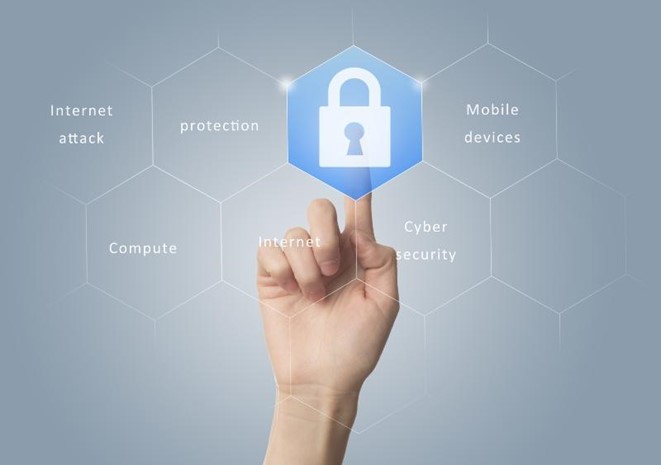
Benefits of Digital Security in Business Continuity
Beyond information protection, digital security is essential because it helps prevent operational disruptions. Cyberattacks like ransomware can stop an organization's operations by blocking access to critical systems and data. This affects productivity and leads to economic losses due to the interruption of business activities. Implementing robust security measures helps minimize the risk of these attacks and ensures that the business continues to operate even amid an incident.
Customer trust and organizational reputation are also highly dependent on digital security. Consumers and business partners expect companies to protect their data adequately. Therefore, investing in digital security protects against cyber threats, strengthens the organization's position in the market, and improves customer confidence.
Another critical factor in digital security is compliance with regulations and standards. In most countries, protecting sensitive data is a business obligation established by law. As a result, European organizations are subject to strict data protection laws and regulations, such as the General Data Protection Regulation (GDPR).
Failure to comply with these regulations results in significant penalties and legal actions. Implementing proper digital security practices ensures the company complies with these regulations, avoiding fines and protecting its legal reputation.
Finally, digital security is and should be considered an investment in the company's future. As cyber threats evolve, organizations must be prepared to address new security challenges proactively. Investing in advanced security technology, training employees in secure practices, and developing robust security policies are essential steps in building a resilient security infrastructure capable of adapting to emerging threats.
Types of IT Security You Should Consider
Computer security extends through different types that have to be addressed together when establishing a strategy.
Application Security
It protects a company's software and applications, from internal programs to mobile and web-based applications. It involves performing security testing to identify and fix vulnerabilities, implementing secure development policies, and using web application firewalls (WAF) to protect against attacks such as SQL injection and cross-site scripting (XSS).
Information Security
It focuses on protecting company data, both at rest and in transit. It includes data encryption, identity and access management (IAM), and implementing data retention and deletion policies. Protecting confidential information such as customer data or intellectual property is essential to prevent theft, subsequent malicious use, and industrial espionage.
Cloud Security
With the increasing use of cloud services, cloud security has become a priority for any organization. Businesses must ensure that cloud service providers adhere to rigorous security standards and that appropriate security controls are in place to protect data stored and processed in the cloud. This includes using identity and access management tools, data encryption, and continuous monitoring of cloud activities.
Network Security
Protecting the company's network infrastructure against unauthorized access, attacks, and other threats involves firewalls, intrusion detection and prevention systems (IDS/IPS), and security solutions for wireless networks. In addition, segmenting the network to limit the scope of a potential attack and continuously monitoring network traffic for suspicious activity is essential.
Keys to establishing an effective digital security strategy
In addition to covering the different types of digital security, to ensure digital security in the company it is necessary to carry out a series of actions regularly:
Analysis of potential risks
Conducting a thorough risk analysis is the first step in establishing an effective digital security strategy. This involves identifying critical business assets, assessing potential vulnerabilities and threats, and determining the impact a security incident could have. Based on this analysis, resources and efforts can be prioritized in the most critical areas, and a risk mitigation plan can be developed.
Staff training
The human factor is often the weakest link in the security chain. Therefore, it is essential to train staff on secure practices and make them aware of cyber threats.
This includes training on identifying phishing emails, the importance of using strong passwords, and the need to report suspicious activity. A strong safety culture starts with knowledgeable and vigilant employees.
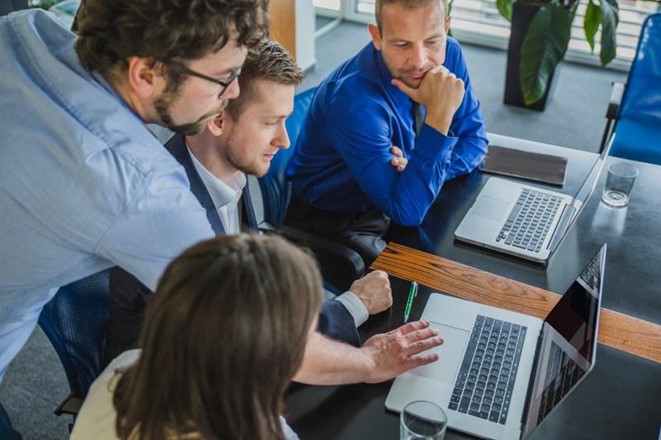
Security policies
Security policies establish the rules and guidelines employees must follow to protect company assets. These policies should cover aspects such as acceptable use of company systems, password management, handling sensitive data, and procedures to follow during a security incident.
Policies should be reviewed and updated regularly to reflect new threats and changes in the company's technology infrastructure.
Security audits
Regular security audits are essential to check the effectiveness of the digital security strategy and detect possible failures. An advanced cybersecurity solution that allows constant auditing through continuous threat monitoring is highly recommended.
Digital security and well-being in the workplace
Digital well-being in the workplace is a comprehensive concept that encompasses protecting against cyber threats and creating a healthy and safe working environment in the digital sphere.
Digital security and employee well-being are closely linked. A secure environment allows employees to work more efficiently and with less stress, which means less risk from social engineering attacks.
- Digital security in the workplace. It involves protecting the company's systems, networks, and data from cyberattacks. It includes using advanced security tools, such as firewalls, intrusion detection systems, and antivirus software, as well as implementing strict security policies. However, it is also crucial to consider the human factor in the equation. Training employees on good security practices, such as identifying phishing emails and using strong passwords, is critical to preventing security incidents.
- Digital employee well-being. This involves creating a work environment where employees can use technology safely and healthily, preventing digital burnout, promoting healthy work practices, and supporting employees in managing their digital time and resources.
- Culture of cybersecurity and digital well-being. Fostering a culture of cybersecurity and digital well-being within the organization is essential for digital security. It involves implementing policies and tools and creating an environment where employees feel supported and valued.
Cyber intelligence for digital security
Cyber intelligence is vital for companies' digital security. By collecting and analyzing threat intelligence, companies anticipate attacks, mitigate risks, and respond effectively to security incidents. Implementing cyber intelligence protects digital assets and business continuity and strengthens resilience and adaptability in the ever-changing digital landscape.
Cyber intelligence provides deep, objective, and up-to-date insight into active threats and exposed vulnerabilities. This information is crucial for making informed decisions and developing effective security strategies focused directly on the organization's vulnerabilities.
Cyber intelligence analytics involves using advanced technologies, such as machine learning and artificial intelligence, to process large volumes of data and extract accurate information about the organization's digital security status and the actions needed to protect it from ongoing threats. These analytics make it possible to identify threats in real-time and predict future malicious activity.
A crucial aspect of cyber intelligence today is that it assesses and protects against the risk of third parties, one of the threats that are becoming more important due to the inevitable digital interconnection between organizations and their value chains.
Kartos reinforces your organization's digital security strategy.
Kartos Corporate Threat Watchbots is the Cyber Intelligence platform for companies developed by Enthec. It helps your organization detect leaked and publicly exposed information in real-time.
Kartos continuously and automatically monitors the external perimeter to locate open gaps and exposed vulnerabilities in real-time, both within the organization and its value chain. Thanks to the issuance of immediate alerts, Kartos allows the organization to take the necessary remediation and protection measures to minimize or nullify the risk detected.
Contact us for more information on how Kartos can strengthen your organization's digital security.
Risks of AI in people's online safety
Artificial intelligence (AI) rapidly transforms the cybersecurity landscape, presenting opportunities and significant challenges.
This article examines how AI risks impact people's online safety, identifies the most relevant dangers, and offers tips on protecting yourself from these risks.
How is the development of AI affecting people's online safety?
The development of artificial intelligence (AI) is revolutionizing online security, transforming both opportunities and challenges in the digital realm. AI's ability to process and analyze large volumes of data, identify patterns, and learn from them brings significant benefits. Still, it is also creating new vulnerabilities and threats that affect people.
One of the most apparent aspects of AI's positive impact on online security is the automation of threat detection. AI-based cybersecurity tools can monitor in real-time and detect anomalous behavior, identify fraud attempts, and detect malicious attacks before they cause considerable damage.
This has dramatically improved incident response capabilities and reduced the time needed to neutralize threats. For individual users, this translates into more excellent protection of their personal and financial data held by companies.

New AI-Driven Threats
However, cybercriminals also leverage AI to improve their targeted attack tactics, which target a specific person rather than an organization.
The creation of deepfakes, for example, uses AI algorithms to generate fake images, videos, or audio that are almost indistinguishable from the real thing. These deepfakes can be used to spread false information, impersonate people in critical situations, or even commit fraud and extortion. AI's ability to replicate human voices has also given rise to highly convincing voice scams, where scammers pose as family members or authority figures to trick their victims.
Another significant risk is the exploitation of vulnerabilities in social networks. AI can analyze profiles and behaviors on these platforms to identify potential targets, collect personal information, and launch targeted attacks. AI-powered bots can also amplify disinformation campaigns and manipulate public opinion, affecting the security of personal data and the integrity of the information we consume.
To mitigate these risks, users must adopt robust security practices. This includes ongoing education about emerging threats and verifying sources before sharing information.
Using advanced security tools that integrate AI capabilities can provide a proactive defense against sophisticated attacks. In addition, being selective about the personal information shared online and adjusting privacy settings on social media can limit exposure to potential threats.
The most relevant dangers of AI
Among the most relevant risks of Artificial Intelligence, we highlight the following.
Creation of deepfakes and digital fakes
Deepfakes are videos or audio created using AI that manipulate images or voices to make them look real. They can be used to spread disinformation, extort people, or even manipulate electoral processes. Digital counterfeits can also be used to impersonate individuals in critical situations.
Voice scams
With the ability to replicate human voices, scammers can impersonate trusted individuals, such as family members or colleagues, to trick their victims into obtaining sensitive information or money. These scams can be extremely convincing and complex to detect without proper tools.
Impersonation
AI can collect and analyze personal information from various online sources, facilitating the creation of fake profiles used to commit fraud and other malicious activities. Phishing is a growing threat in the digital age, exacerbated by AI's capabilities.
Social Media Vulnerabilities
Social media is fertile ground for the exploitation of AI. Cybercriminals can use AI algorithms to identify and exploit vulnerabilities in these platforms, from creating fake profiles to spreading malware. In addition, they can use bots to amplify malicious messages and manipulate public opinions.
Financial Fraud
AI is also being used to commit financial fraud. From creating highly personalized phishing emails to automating fraudulent transactions, cybercriminals use AI to bypass traditional security systems and steal money and financial data.
Ethical and legal risks
The use of AI in cybersecurity poses several ethical and legal risks. AI's ability to make autonomous decisions can lead to situations where privacy rights are violated, or mistakes are made with serious consequences. In addition, the misuse of AI for malicious activities poses significant legal challenges, as current laws are often ill-equipped to address these issues.
How to protect yourself from AI risks
Protecting yourself from AI-related personal online security risks requires education, advanced tools, robust security practices, and collaboration.
Education and Awareness
The foundation of good online security is education. Knowing the risks and how to deal with them is essential. People also need to stay informed about cybercriminals' latest tactics, such as using AI.
Participating in online courses, webinars, and reading blogs specializing in cybersecurity are effective ways to stay current. Continuing education allows us to recognize warning signs and respond appropriately to threats.
Source and Authenticity Verification
One of the most significant risks today is digital deepfakes, which use AI to create fake content that looks real. To protect yourself, it's crucial to always verify the authenticity of information before sharing or acting on it.
Verification tools, such as services that verify the authenticity of news and emails, can help identify and prevent deception.
Use Advanced Security Tools
Numerous security tools use AI to provide advanced protection. These include antivirus software, malware detection programs, and mobile security apps. These tools can analyze behavior in real-time, detect suspicious patterns, and alert users to potentially dangerous activities.
It's essential always to keep these tools current to ensure they're equipped to deal with the latest threats.
Protection of personal data
The protection of personal data is critical in today's digital environment. People should be cautious about the information they share online. Setting your social media privacy settings to limit who can see and access personal information is essential.
It is critical to use strong, unique passwords for each account and change them regularly. Additionally, using password managers can help maintain security without the need to remember multiple passwords.
Multi-Factor Authentication
Multi-factor authentication (MFA) adds an extra layer of security. In addition to a password, MFA requires a second verification form, such as a code sent to a mobile phone. This makes it difficult for attackers to access the accounts, even if they manage to obtain the password. Implementing MFA on all possible accounts is an effective measure to increase security.
Constant monitoring
Constant monitoring of accounts and online activity can help quickly detect unusual behavior. Setting up alerts for suspicious activity, such as login attempts from unrecognized locations, allows you to act immediately.
Some services monitor the use of personal information on the dark web and alert users if their data is at risk.
Collaboration and communication
Collaboration and communication with friends, family, and colleagues about cybersecurity can help build a support network and share best practices. Discussing common threats and how to deal with them can raise collective awareness and reduce the risk of falling into cybercriminal traps.
Qondar by Enthec helps you protect your data and digital assets from AI threats
Qondar Personal Threats Watchbots is an innovative platform developed by Enthec to protect people's online personal information and digital assets.
Qondar monitors sensitive data, financial and patrimonial assets, and individual social profiles to detect public leakage of these and prevent their criminal and illegitimate use.
If you want to protect your digital assets or those of your organization's relevant members and avoid the dangers of artificial intelligence to humans, contact us to find out how Qondar can help.



